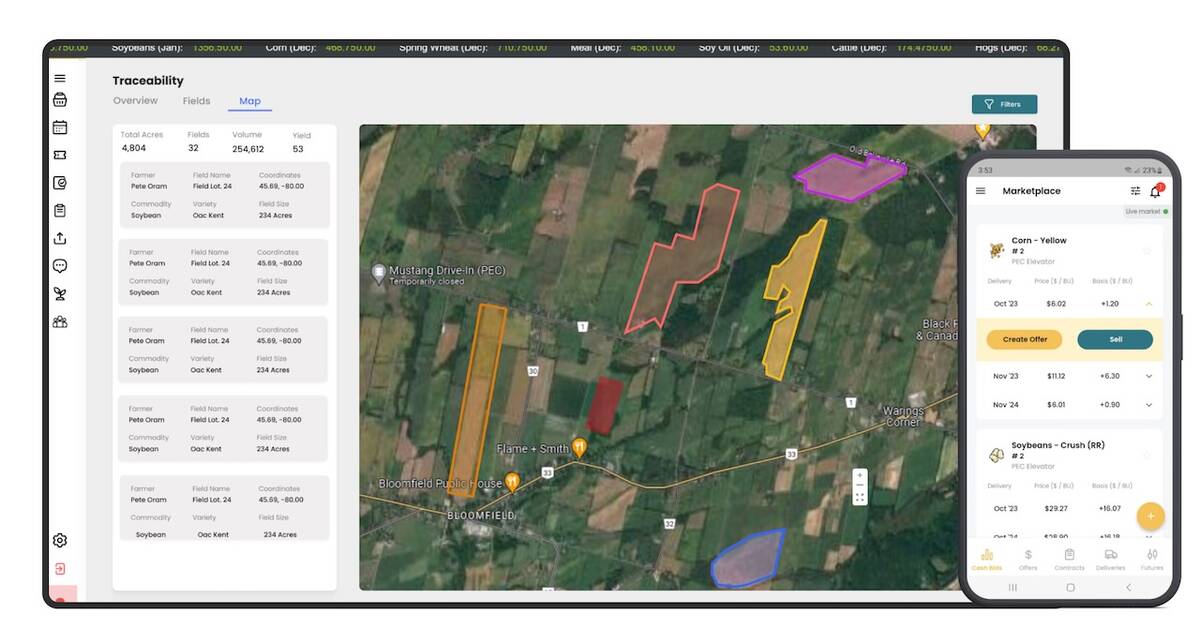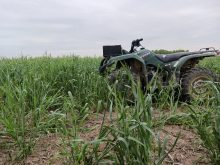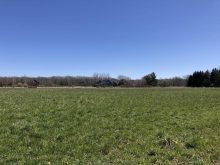The recently released 2020 Ontario Cover Crop Feedback report has delivered insight into the benefits of cover cropping and the barriers that limit adoption.
The main benefits identified include better soil health, increased soil organic matter and reduced erosion, while the challenges include lack of equipment, costs and a short growing season.
The report stems from Canada’s largest cover crop survey conducted by Yvonne Lawley, a University of Manitoba assistant professor, and her graduate student Callum Morrison. They have expertise in cover crop surveys and reporting, having done a similar project for the prairie provinces.
Read Also

Ontario company Grain Discovery acquired by DTN
Grain Discovery, an Ontario comapny that creates software for the grain value chain, has been acquired by DTN.
The work was supported by the Ontario Cover Crop Strategy Group (OCCSG), Grain Farmers of Ontario and a record 731 respondents.
Why it matters: Cover crops can improve soil health and sequester carbon but their adoption rate is slow. Surveys help researchers understand the reasons so they can better guide farmers.
“Ontario has a wealth of experience with cover crops and is one of the leaders in cover crop adoption right now across Canada,” said Lawley. “It’s a really exciting time to learn both about what’s going well and also what the current challenges are. That feedback has been really important for researchers like myself, as well as extensionists and policy analysts.”
“We believe this is the largest number of respondents who have taken part in a survey of this kind in Canada when we consider these farmers were not paid,” said Morrison. “This is just farmers who were interested in sharing their story about cover cropping. That is a tremendous number.”

Running from February to April 2021, the survey posed general questions to establish farm characteristics, size, motivations, cover crop use and the information sources farmers use. Then it branched into specific questions.
It defined cover crops as crops planted primarily to provide soil health and agronomic benefits and not harvested as a significant cash crop. Annual forage and grazed cover crops were included in the definition.
Morrison said participants spanned the width and breadth of the province, with Huron County leading at 40 participants, followed by Norfolk and Middlesex counties. Warkworth, Cochrane and Haliburton had no cover crop farmers participate, while Metro Toronto, Waterloo and Hamilton had zero representation from those who didn’t grow cover crops in 2020.
The survey cultivated 520 respondents who grew 107,900 acres of cover crops in 2020. Of those, 75 per cent were field croppers, 42 per cent were livestock producers and 23 per cent were vegetable farmers. Most non-cover crop respondents identified as livestock producers followed closely by field croppers, and approximately a quarter were vegetable farmers.
Morrison said 26 per cent had grown cover crops for three to five years. However, 18 per cent of respondents had been growing them for more than 26 years and most said it had improved soil health, increased soil organic matter and reduced soil erosion.
Seventy-one per cent said these improvements were measurable within the first three years of adopting cover cropping.
“Cover crops, particularly legumes, can help to build soil nitrogen by taking nitrogen out of the air and fixing it with the help of rhizobium bacteria to the soil,” said Morrison. “There are many other benefits seen by farmers including more earthworms, increased infiltration, less weeds, reduced compaction and increased biodiversity.”

The practice isn’t without challenges. Morrison said more than 30 per cent of growers said poor cover crop establishment and late harvest of cash crops impacted coverage, and 25 per cent cited cultivation costs as a challenge.
“How are cover crops influencing farm profit? This is a very important question to ask because, of course, there’s a business involved,” he said.
“The economic importance of cover crops needs to be investigated. And we actually found out that in 37 per cent of cases, farmers saw an increase in their profit.”
Of the 211 non-cover-crop growers who participated, more than half had never grown a cover crop but were open to trying it, 39 per cent didn’t grow in 2020 but had previously, and only nine per cent reported zero interest in cover cropping.
Non-cover crop farmers said additional costs, lack of equipment, a short growing season and not knowing where to start topped the barriers.
Additionally, 40 per cent said technical assistance and 29 per cent said greater access to cover crop agronomy would encourage them to consider it. Soil tests, local farm tours and the development of a local cover cropping network round out the suggestions on how to increase uptake for non-growers.
“By understanding (the barriers), we can see where we need to focus our efforts to assist farmers if they so wish to grow a cover crop,” said Morrison. “And see where investment and research may need to be put in the future if we want to try and assist these farmers.”
Morrison said financial incentives such as tax credits, carbon sequestration or conservation payments and discounted crop insurance rates could be motivators to establish or increase cover crop acres.
“We look forward to working with our farmer customers to transfer this knowledge and providing our advisory services in support of their farm management decisions around soil health improvement, environmental stewardship and continued cover crop adoption,” said Ken Currah, Certified Crop Advisor and OCCSG member.
The response from farmers, researchers and the OCCSG will go far in representing the needs and voices of grain farmers and highlight areas for increased support, said Paul Hoekstra, Grain Farmers of Ontario vice-president of strategic development.
The two survey authors suggested the data set could prompt more studies.
“The design of a survey doesn’t necessarily allow us to go and answer all questions, but it certainly brings out new ideas,” said Lawley.
“I’m really excited, as a researcher in cover crops and a collaborator with colleagues across the country, about the potential to develop new ideas and go in new directions from this feedback.”













